Blogs

Understanding IN-100 Alloy: A Comprehensive Tutorial on Properties and Applications
Introduction
In the realm of advanced materials, the IN-100 alloy emerges as a pivotal player, expertly crafted to meet the stringent requirements of various industrial applications. With a unique composition of Nickel, Molybdenum, and Iron, this alloy not only offers superior corrosion resistance and mechanical strength but also showcases remarkable high-temperature stability, making it indispensable in sectors where performance and reliability are non-negotiable.
As industries continue to evolve, the strategic application of IN-100, alongside complementary products like Mica Tapes and non-sparking tools, is reshaping procurement strategies and enhancing operational efficiency.
This article delves into the key properties, applications, and future trends surrounding IN-100 alloy, providing valuable insights for procurement managers seeking to optimize their material selections in a competitive landscape.
Introduction to IN-100 Alloy: Composition and Key Properties
The DOMADIA Nickel Molybdenum Iron Alloy is a sophisticated material with a carefully engineered composition of Nickel (Ni), Molybdenum (Mo), and Iron (Fe), designed to meet the rigorous demands of industrial applications. This composite provides superior corrosion resistance, ensuring optimal performance in aggressive environments, along with excellent mechanical properties that maintain structural integrity and longevity. Its high-temperature stability allows it to perform effectively under extreme heat conditions, making it an ideal choice for various industrial sectors.
Crafted with precision, this alloy is a testament to DOMADIA’s commitment to quality since 1952, positioning the company as a trusted supplier of special metals and alloys. Furthermore, our Tapes offer outstanding high-temperature electrical insulation, rendering them vital for numerous uses where heat resistance is crucial. Our Non-Sparking Tools are designed for use in explosive environments, ensuring safety without compromising performance.
We invite you to explore our extensive catalog and contact our expert team today to discover how our products can meet your industrial needs.
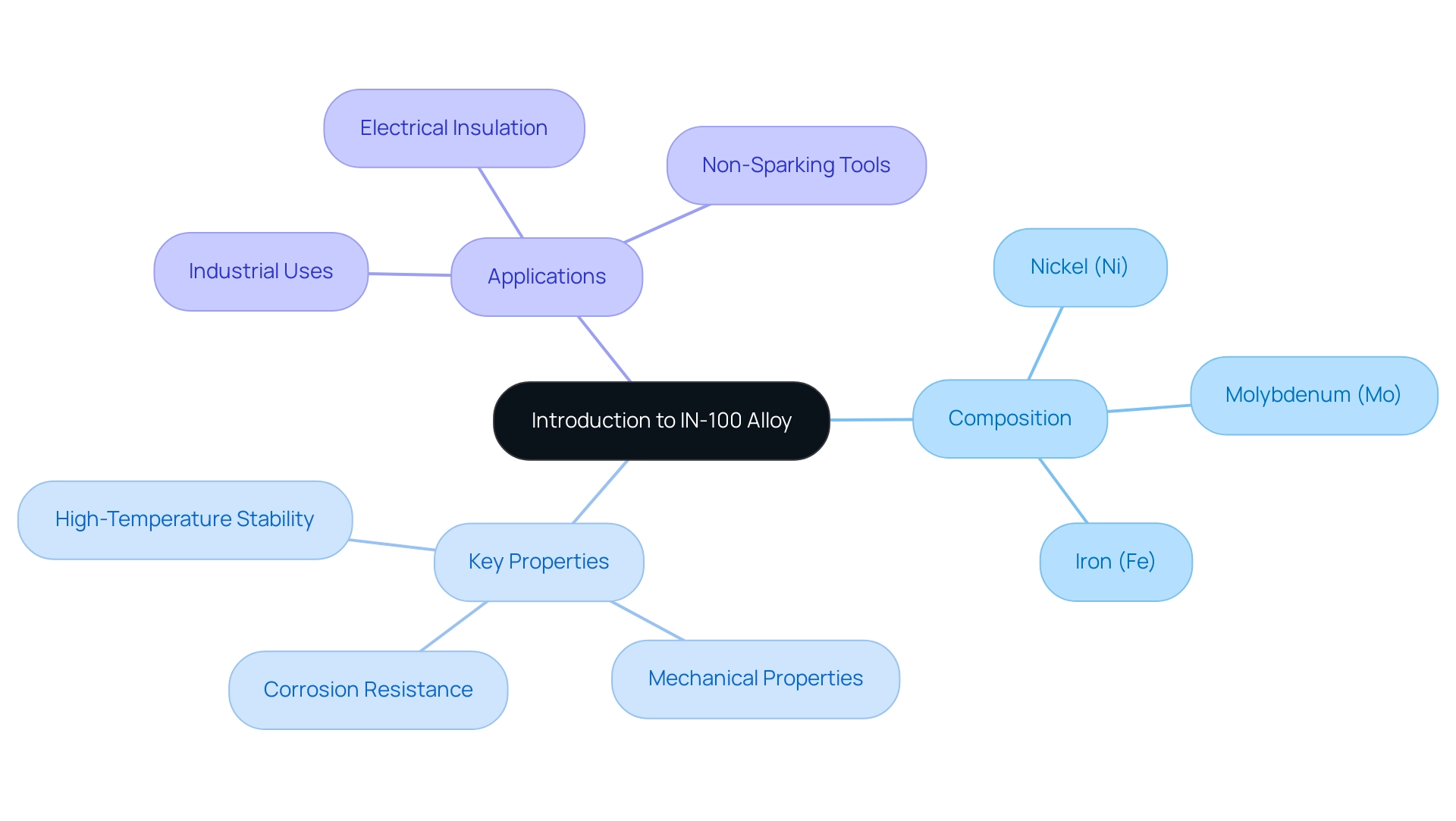
Applications of IN-100 Alloy: Where and How It Is Used
Domadia’s insulation tapes are essential for high-temperature electrical insulation solutions, particularly in explosive environments where non-sparking tools are critical. These tapes exhibit remarkable thermal stability and electrical insulation properties, making them ideal for applications in:
- Aerospace
- Automotive
- Industrial settings
Their ability to withstand extreme temperatures ensures safety and reliability in critical components, such as:
- Electrical connectors
- Insulation for high-performance machinery
Non-sparking tools, when utilized alongside insulating tapes, enhance safety in environments with explosive potential by minimizing the risk of ignition. As industries increasingly prioritize safety and efficiency, the demand for Mica Tapes and non-sparking tools continues to grow, reinforcing their importance in modern manufacturing and procurement strategies.
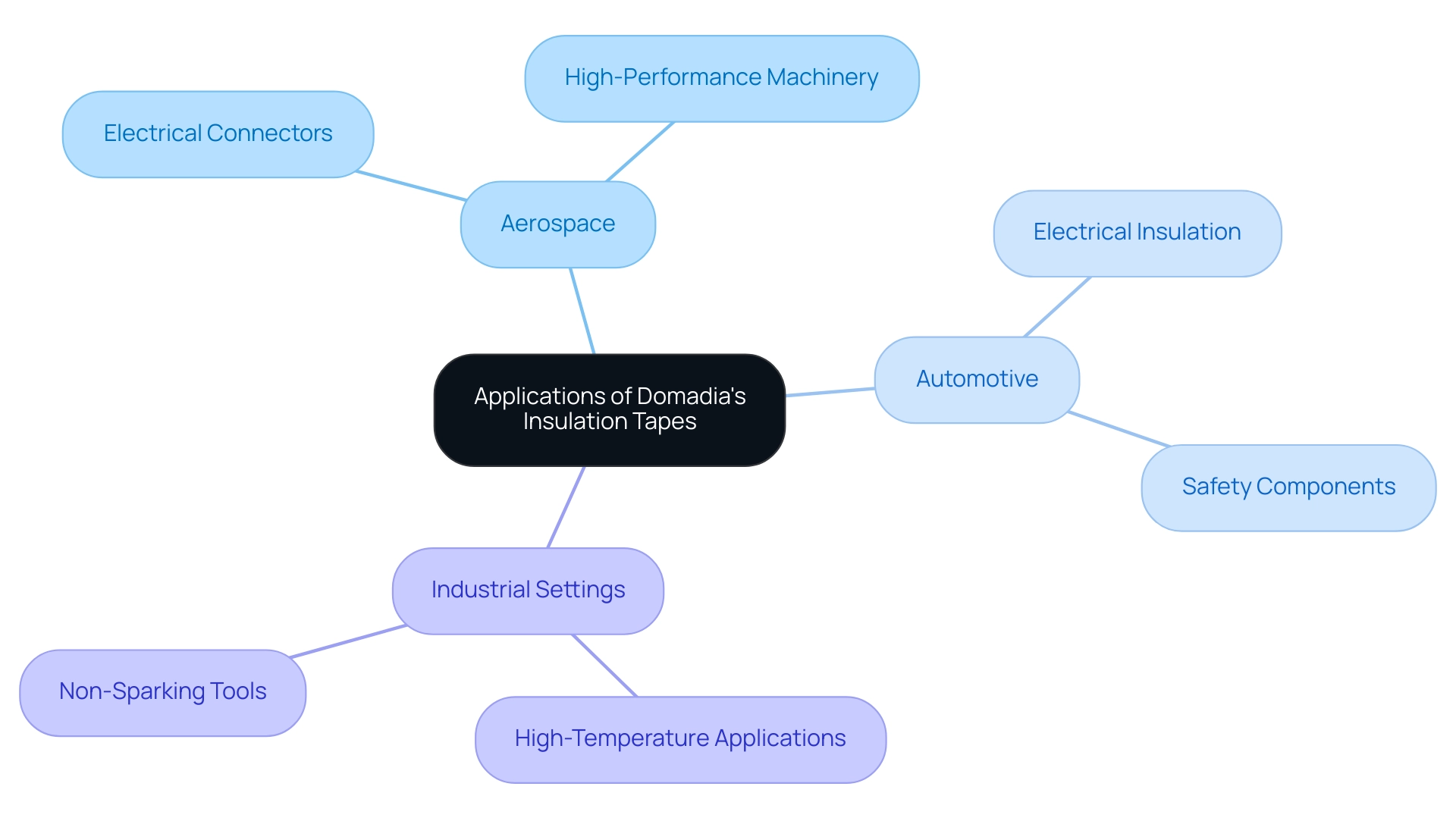
Mechanical Properties of IN-100 Alloy: Strength and Durability
The remarkable mechanical characteristics of IN-100 alloy are essential for its use in high-performance environments. Specifically, IN-100 alloy possesses a yield strength of approximately 70 ksi and a tensile strength nearing 100 ksi, making it a compelling choice for demanding industrial applications. Furthermore, IN-100 alloy is characterized by its excellent ductility and toughness, which enables it to endure considerable deformation without compromising structural integrity.
Notably, the remarkable fatigue resistance and high-temperature performance found in IN-100 alloy are critical for components that experience cyclic loading and elevated thermal conditions. Moreover, it provides outstanding corrosion resistance and thermal stability, making it appropriate for a range of essential uses in IN-100 alloy across various industries. As part of a comprehensive offering, DOMADIA supplies high-quality Mica Tape products, including:
- Mica Insulation Tape
- Mica Sheet Tape
- Specialized Mica Tape for electrical uses
These products provide superior electrical insulation and thermal resistance, ideal for critical applications in electrical engineering, such as fire-resistant cables and insulation systems. The processing characteristics of IN-100 alloy include a solution temperature of 529 °C and aging temperatures of 160 °C and 177 °C for various product forms, with the aging temperature for extrusions being 177 °C. Recent studies underscore these properties, revealing that the mixture retains its strength and functionality in IN-100 alloy under significant stress.
By understanding both the mechanical characteristics and processing context of materials in IN-100 alloy, alongside the capabilities of various Mica Tape products for high-temperature resistance, procurement managers can strategically select materials that not only meet performance demands but also enhance the reliability of their uses across industries such as aerospace, automotive, and petrochemical.
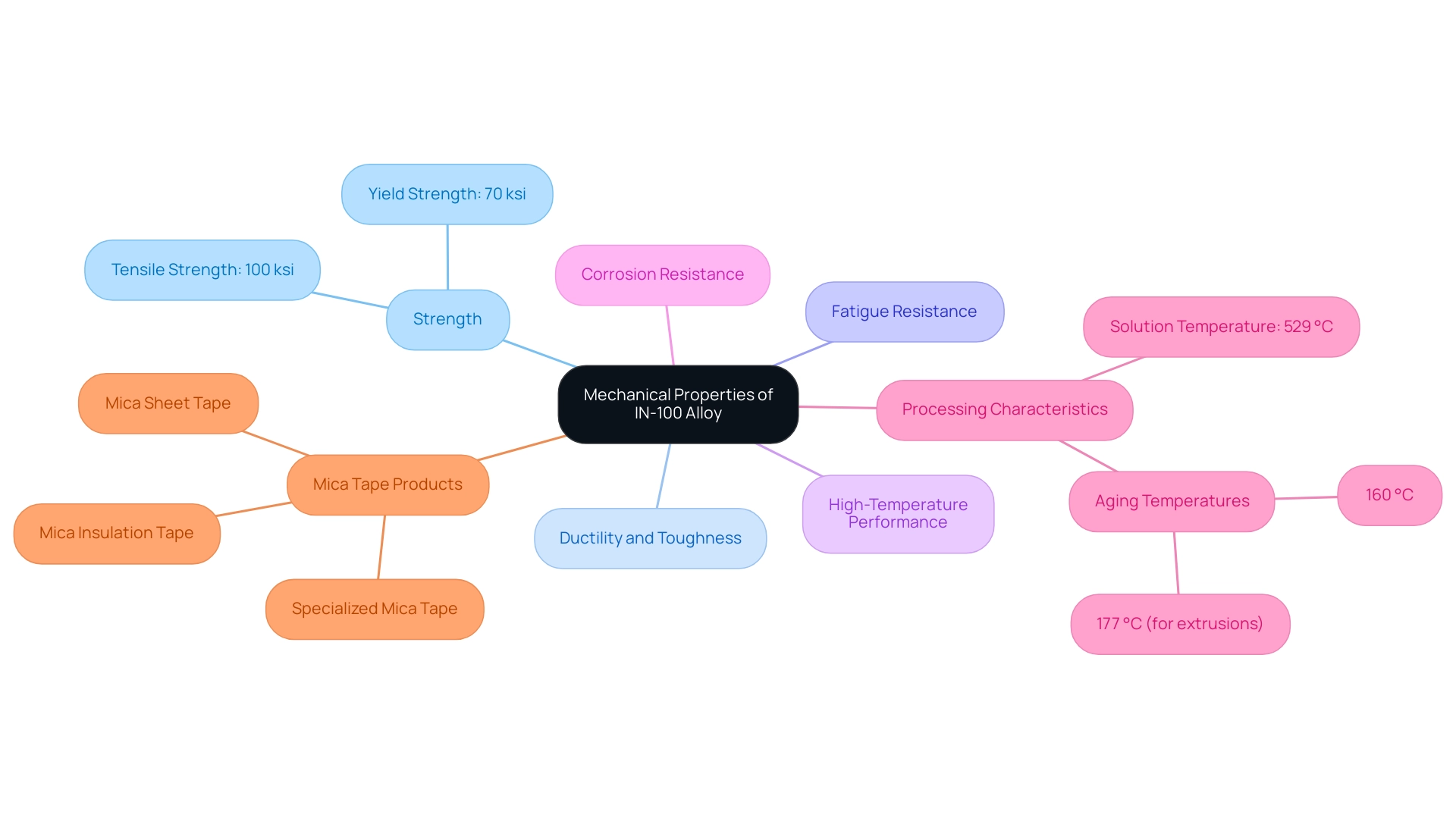
Corrosion Resistance of IN-100 Alloy: Ensuring Longevity
The material stands out for its exceptional resistance to oxidation and corrosion, especially in extremely high-temperature conditions. As a vacuum melted and investment cast nickel-based composition, this metal is specifically tailored for challenging uses, such as turbine blades functioning at temperatures between 1850-1900 °F. Its specialized composition, rich in Nickel, Molybdenum, and Iron, allows for the formation of a protective oxide layer on the surface, effectively shielding the material from further degradation.
This characteristic is especially beneficial in sectors like aerospace and automotive, where components frequently encounter harsh conditions, including moisture and aggressive chemicals. Additionally, our tape products complement these high-performance alloys by providing superior electrical insulation, with dielectric strength and flame resistance, making them indispensable in critical applications like fire-resistant cables and electrical insulation systems. By incorporating Mica Tape into their operations, organizations can significantly enhance the longevity of critical components, reduce maintenance expenditures, and bolster overall reliability.
Such advantages make the material in 100 alloy an astute choice for procurement managers who prioritize sustainability and cost-effectiveness in their selections. Recent research and detailed information found in the datasheet highlight the material’s performance metrics, validating its appropriateness for high-performance uses. Furthermore, Soft Magnetic Iron Nickel Alloys can also play a crucial role in related applications, offering additional benefits in electrical engineering and high-temperature environments.
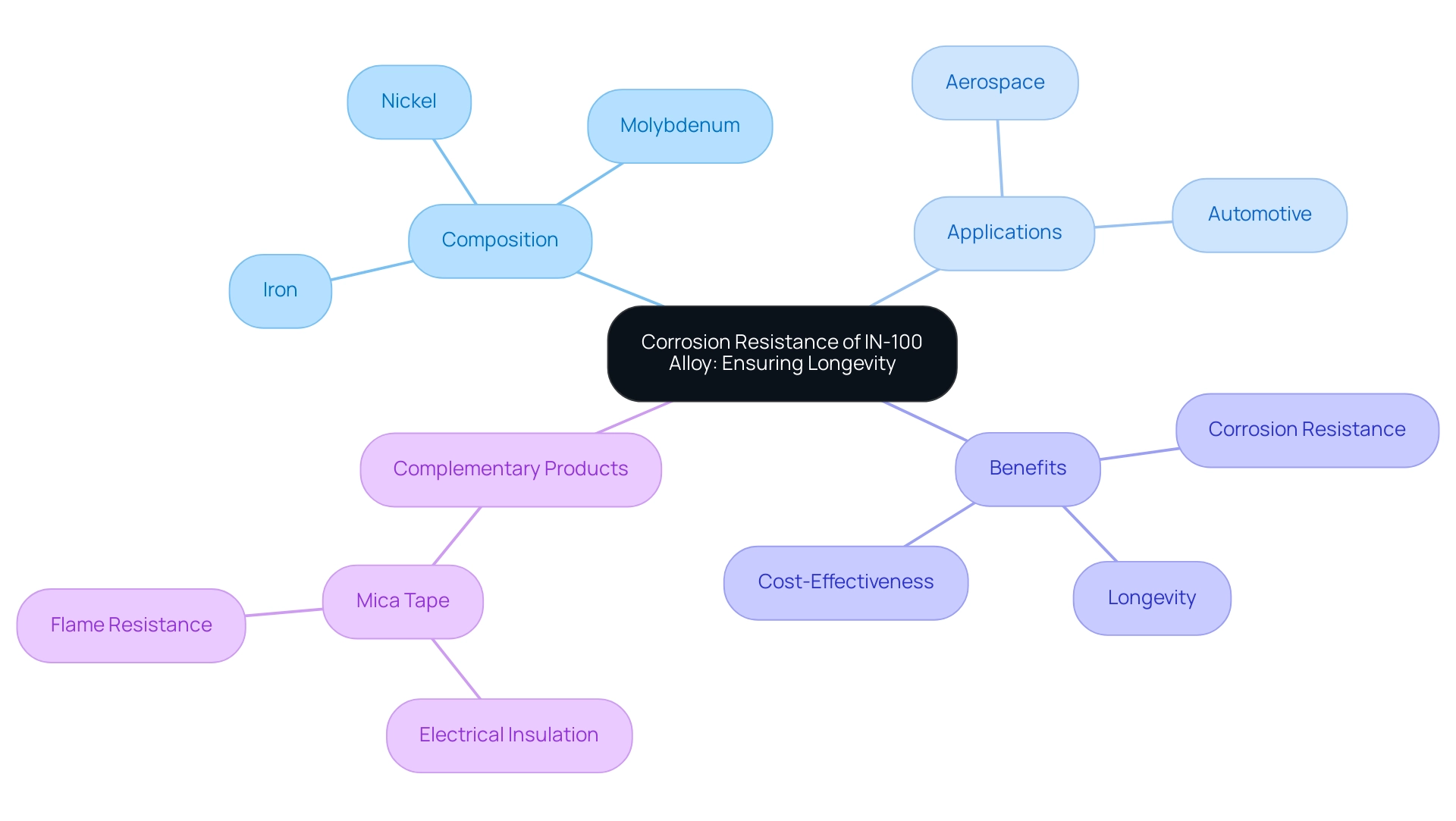
Fabrication Techniques for IN-100 Alloy: Best Practices
When creating parts from the specified material, following particular best practices is crucial for preserving optimal performance attributes. For welding, utilizing gas tungsten arc welding (GTAW) or laser welding techniques is highly recommended. These methods minimize heat input, significantly reducing the risk of distortion.
Notably, wires such as EXXTX-K6, which provides a tensile strength range of 60 to 70 ksi, are excellent choices for ensuring strong welds. Furthermore, preheating the material prior to welding can effectively mitigate the chance of cracking, thus enhancing the overall integrity of the weld. In terms of machining, employing carbide tools combined with a low cutting speed is critical.
This method prevents overheating, ensuring a clean finish while maintaining the material’s desirable properties. Additionally, post-welding processes such as cleaning and pickling are crucial for improving corrosion resistance. As highlighted in a case study, effective methods like immersion pickling or light cleaning are recommended to remove the oxide layer formed during welding, which can otherwise reduce corrosion resistance.
By rigorously following these fabrication techniques, manufacturers not only secure the integrity and performance of components but also contribute to more favorable procurement outcomes, aligning with industry standards and expectations.
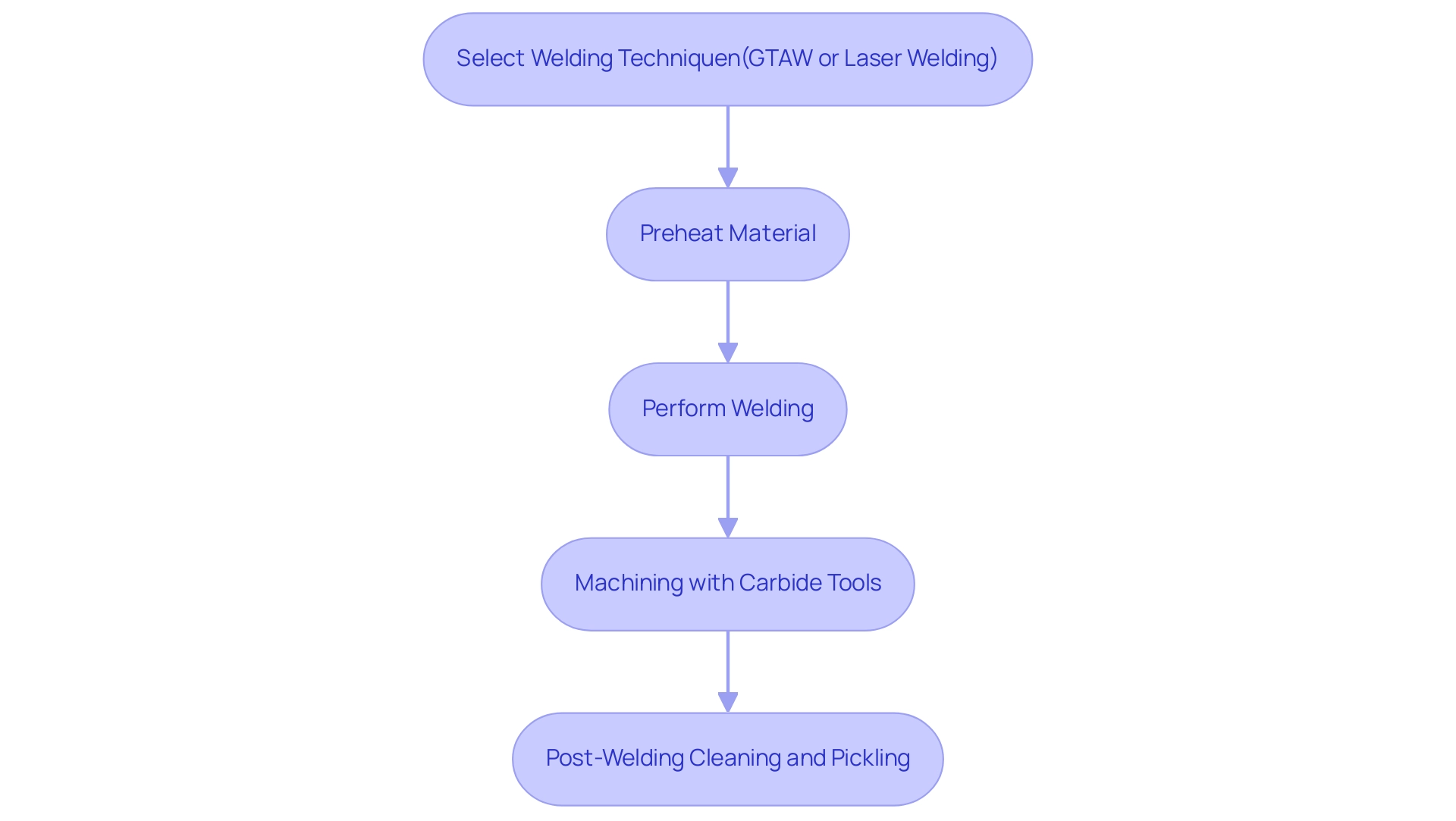
Future Trends in IN-100 Alloy Development
As industries progress, substantial research and development efforts are expected to concentrate on the specific material, particularly intended to improve its characteristics such as the strength-to-weight ratio and machinability. Innovations in additive manufacturing techniques are poised to unlock new possibilities for applications in 100 alloy, enabling the creation of complex geometries while simultaneously reducing material waste. This shift not only enhances functionality but also aligns with the increasing emphasis on sustainability within metal manufacturing.
For example, producing new cans from recycled materials conserves approximately 95% of the energy required to create cans from bauxite, emphasizing the potential for energy conservation in production. Furthermore, according to Fortune Business Insights, the superior physical properties and use of aluminum in automobiles due to its lower weight drive the demand for high-performance materials. Future developments are expected to prioritize enhanced recyclability and diminished environmental impact, reflecting a broader industry commitment to responsible practices.
The demand for high-performance alloys, particularly in the oil and gas sector, is underscored by the ongoing Alaska LNG project and various initiatives in China, which are expected to boost the demand for in 100 alloy. By staying informed about these trends, procurement managers can make proactive decisions that align with evolving market demands and contribute to sustainable practices in their organizations.
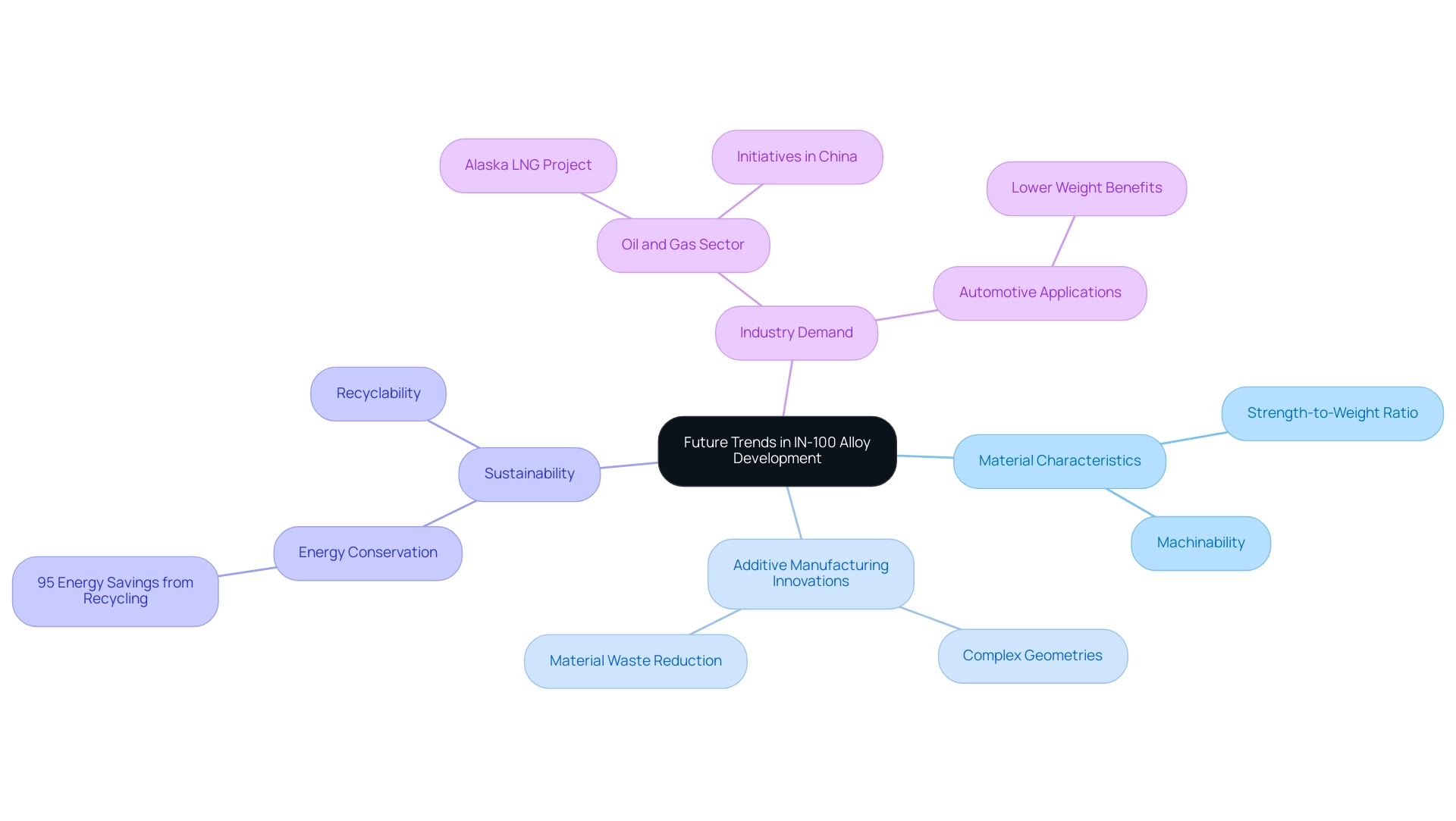
Conclusion
The IN-100 alloy is undeniably a cornerstone in the landscape of advanced materials, offering a unique blend of corrosion resistance, mechanical strength, and high-temperature stability. Its meticulously engineered composition of Nickel, Molybdenum, and Iron positions it as an ideal solution for demanding industrial applications across various sectors, including aerospace, automotive, and petrochemical industries.
The strategic integration of IN-100 alloy, alongside complementary products like Mica Tapes and non-sparking tools, underscores the importance of safety and efficiency in modern manufacturing. As industries prioritize operational reliability, the remarkable mechanical properties and fatigue resistance of IN-100 become essential considerations for procurement managers aiming to enhance the longevity and performance of critical components.
Looking ahead, the future of IN-100 alloy development is poised for innovation, with a focus on improving machinability and sustainability through advanced manufacturing techniques. By keeping abreast of emerging trends and technologies, procurement professionals can make informed decisions that not only meet current operational demands but also align with the growing emphasis on environmental responsibility.
In summary, the IN-100 alloy stands out as a vital material for industries that cannot compromise on performance. Its exceptional properties, combined with a strategic approach to procurement and fabrication practices, empower organizations to thrive in an increasingly competitive landscape.




